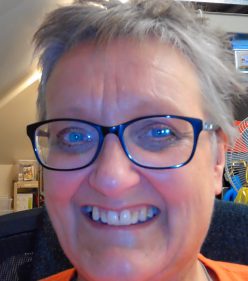
Month: June 2020
Grow some Bean Sprouts 🌱


You may like to build a maze in an old shoe box for your plant. Watch how it grows towards the light!
Songs about the Ocean 🦈
Our own playlist of songs about the ocean
Carpenter Ants 🐜 and Carpenter Bees 🐝
Recently, I posted a video that one of our Volunteers, Bruce, took of some carpenter ants making a nest in an old piece of Fir (see below.)
Then I found a video about Carpenter Bee nests. What was particularly fascinating about their nests is that they are very similar to Mason Bee nests, some of which we maintain in the Canuck Place garden in Vancouver. When I have access to all my materials again, I’m currently working from home, I’ll post about our Mason Bees!
Unfortunately the video about Carpenter Bee nests cannot be played anywhere other than YouTube. You can search it by it’s title:
Carpenter Bee Tunnel and Development by Peter
Above is a video Bruce took of some carpenter ants making a nest in an old piece of Fir.
Bruce, often leaves interesting objects in the classroom for me to share with the children; mostly things he’s found in the garden! Lucky for us, Bruce is still sharing things with us even during this time of social distancing!
Carpenter Ants make nests in wood by chewing sandpaper-smooth tunnels and chambers in wood. They cannot eat the wood. The wood is discarded as shredded fragments of coarse sawdust ejected from the nests. The sawdust may contain dead ants and bits of dead insects that the carpenter ants have eaten.
If you’ve seen a “big, black ant” outside your house, it was probably a carpenter ant. Carpenter ants serve a useful purpose in nature. Their nests consist of tunnels and chambers chewed into soft wood. The openings and hollow spaces they create contribute to the natural decay of stumps, logs and dead limbs. Without recyclers such as carpenter ants we would be up to our necks in dead, un-decomposed organic matter in the landscape and woodlands.
The Day the Crayons Quit
Recently Emmett and I read one of my favourite books

In this book the crayons quit and each write a letter to their owner, Duncan, detailing their reasons for quitting. A lot of the crayons are upset that they are only used to colour a limited range of objects and would like to colour other things too.
After reading the book I asked Emmett to do a drawing using unexpected colours. And this is the brilliant result!

Brave Wilderness explores the Oceans 🦈
These videos are by a man called Coyote Peterson who has a LOT of nature videos on his BRAVE WILDERNESS YouTube channel.
He is very enthusiastic and the videos are made for kids of all ages (I love them)
This is a playlist of twelve of his videos about ocean creatures (roughly two hours in total)
2 Hours of Beautiful Coral Reef Fish, Relaxing Ocean Fish, & Stunning Aquarium Relax Music
Learn about SEA CREATURES – videos
Approximately 31 mins. For younger children.
Small number and the big tree
Small Number is a young boy who gets into a lot of mischief. With his sister Perfect Number he visits their Grandma who lives in a small village on their Nation’s traditional territory.
To promote mathematics among Aboriginal learners a group led by Veselin Jungic of The IRMACS Centre at SFU has created a series of stories with mathematical themes. These stories are based on the storytelling tradition of Aboriginal peoples.
All of the stories have been translated into several Aboriginal languages, including Blackfoot, Cree, Halq’em ́eylem, Heiltsuk, Hul’q’umi’num’, Huu-ay- aht, Nisga’a, Sliammon, and Squamish languages.
All of the stories can be found at http://mathcatcher.irmacs.sfu.ca/stories and on YouTube on ‘The IRMACS Centre’ channel
The first story, Small Number Counts to 100 was inspired by narration from Ms. Rina Sinclair of the Siksika Nation.
Small Number and the Salmon Harvest
Small Number is a young boy who gets into a lot of mischief. He lives in a small village by the water with his mother and father. It is a crisp autumn day and Small Number is helping his father to prepare the nets for tomorrow’s salmon harvest. “There is a school of salmon by Straight Line Beach. We need to set our net in the morning while the tide is still high,” says Small Number’s father...
To promote mathematics among Aboriginal learners a group led by Veselin Jungic of The IRMACS Centre at SFU has created a series of stories with mathematical themes. These stories are based on the storytelling tradition of Aboriginal peoples.
All of the stories have been translated into several Aboriginal languages, including Blackfoot, Cree, Halq’em ́eylem, Heiltsuk, Hul’q’umi’num’, Huu-ay- aht, Nisga’a, Sliammon, and Squamish languages.
All of the stories can be found at http://mathcatcher.irmacs.sfu.ca/stories and on YouTube on ‘The IRMACS Centre’ channel
The first story, Small Number Counts to 100 was inspired by narration from Ms. Rina Sinclair of the Siksika Nation.

